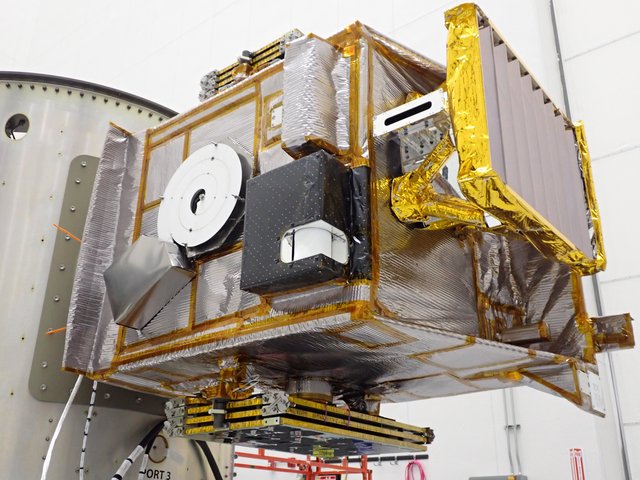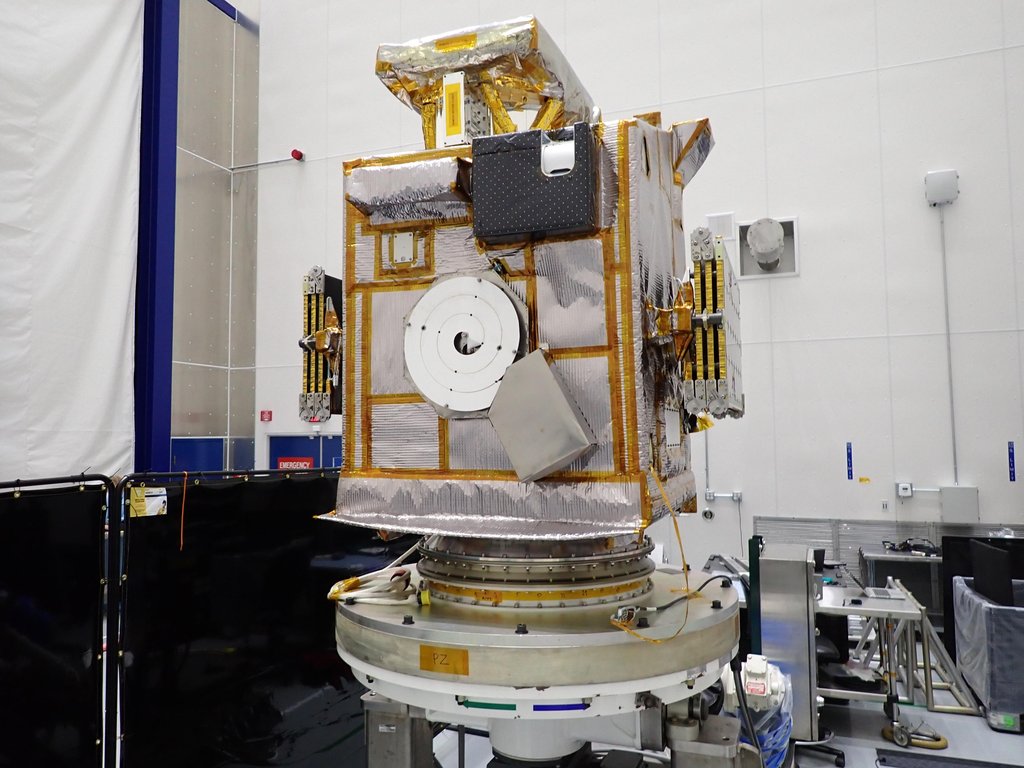NASA's Lunar Trailblazer Fueled Before Launch
NASA's Lunar Trailblazer sits on its rotation fixture after being fueled and prior to being installed to the EELV Secondary Payload Adapter (ESPA) ring at SpaceX's payload processing facility in NASA's Kennedy Space Center in Florida in early February 2025. The ESPA ring is an adaptor used for launching secondary payloads on launch vehicles.
Figure A shows the spacecraft mounted horizontally, in its launch configuration, to the ESPA ring.
The mission's two science instruments are visible. The High-resolution Volatiles and Minerals Moon Mapper (HVM³) is the angular structure atop the spacecraft; the Lunar Thermal Mapper (LTM) is the black square on the upper right of the front facing panel.
Lunar Trailblazer is a rideshare launching with the Intuitive Machines' IM-2 mission – part of NASA's CLPS (Commercial Lunar Payload Services) initiative – which is slated for launch no earlier than Feb. 26 from Launch Complex 39A at Kennedy. The mission is led by Principal Investigator Bethany Ehlmann of Caltech in Pasadena, California. Caltech also leads the mission's science investigation, and Caltech's IPAC leads mission operations, which includes planning, scheduling, and sequencing of all spacecraft activities. NASA's Jet Propulsion Laboratory in Southern California manages Lunar Trailblazer and provides system engineering, mission assurance, the HVM³ instrument, and mission design and navigation. JPL is managed by Caltech for NASA. Lockheed Martin Space provides the spacecraft, integrates the flight system, and supports operations under contract with Caltech. The University of Oxford developed and provided the LTM instrument, funded by the United Kingdom Space Agency. Lunar Trailblazer, part of NASA's Lunar Discovery Exploration Program, is managed by NASA's Planetary Mission Program Office at Marshall Space Flight Center in Huntsville, Alabama, for the agency's Science Mission Directorate in Washington.
For more information about Lunar Trailblazer:

